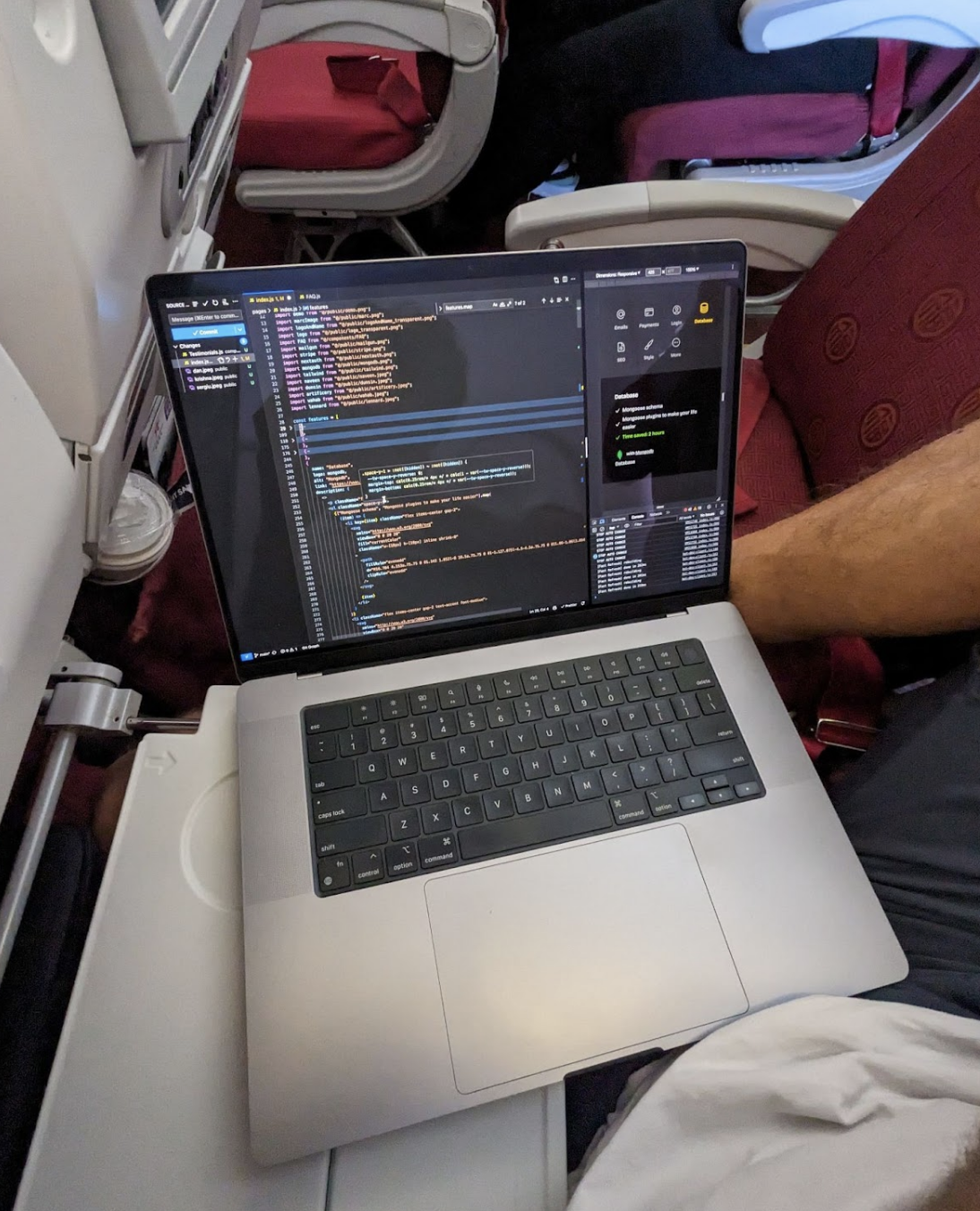How Marc makes $50k+ every month with multiple products
In this case study, we learn how Marc Lou, ProductHunt’s maker of the year 2024, makes $50,000/Month with multiple products like his developer boilerplate Shipfa.st.
Full name: Marc Lou
Business: ShipFast.
Started in: 2023
Website: shipfa.st
Social Media:
https://twitter.com/marc_louvion
https://www.youtube.com/channel/UC12JO2IPlEViR-o6SLXKx1A
https://www.linkedin.com/in/marclouvion/
Role: Founder
Employees: 0
Monthly revenue: $50,000+
Who are you, and what’s the SaaS you’re working on?
I’m Marc Lou, founder of ShipFast. I shipped 16 products in the last 2 years, from AI tools to SaaS.
In 2021, I was depressed, living with my parents and 0 income. One day, I saw a tweet from Pieter Levels, a guy building startups with a laptop and no employee — Freedom.
I took the plunge, moved to Bali, and shipped like a madman.
I showed up every day, even when I didn't feel like it. 2 years later, I'm making $50K/month with my 20 products.
How did you come up with the idea?
From shipping this many products, I realized I was doing the same thing over and over:
Set up DNS records, listen to Stripe webhooks, design pricing section…
I spent a week gathering all the code I used in the last 2 years and made a boilerplate — ShipFast.
I launched it on Product Hunt a few hours before going to Hong Kong and kept adding features in the plane.
How did you validate the product?
I didn’t have to. As I’m making websites regularly, I knew having a code template I could reuse for every project would be useful.
I just shared it on my Twitter.
How did you launch the product?
I launched on Product Hunt, Twitter, and Hacker News.
Product Hunt was the most successful, bringing 3,000 visitors thanks to their newsletter.
48 hours later, I’ve made $6,000.
What were 3 ways you got the first customers to your product?
I don’t have a master plan, to be honest.
I’ve built an audience on Twitter for the last 2 years — which gives an initial boost.
Whenever I launch, I make a skit video — like this one, which makes the Tweet go viral.
I list my startup on Reddit and Hackers News too.
It brings the first visitors, and the first customers if my product is nice.
What is the SaaS doing right now in terms of numbers?
It’s a one-time payment product (not recurring), but surprisingly, it’s recurring.
It makes anywhere from $500 to $3,000 per day, at 91% profit and 0 employees.
Since I launched in September, I’ve made almost $250,000.
What’s the best growth hack or tactic to get new customers to your SaaS right now?
Twitter is big. That’s where I get my first users all the time.
It’s hard to get visibility when you get started, but there are 2 ways to make some noise:
Have a very catchy headline that challenges the status quo
Make a killer demo video. I embed myself in popular movies and it works well all the time, even when I had 1,000 followers.
What is your biggest lesson learned thus far?
Headlines are the most important part of marketing.
The world is busy, people don’t have time to judge a 1,000-word website.
The first impression matters. If your headline is short, useful, and triggers an emotion, most of your visitors will pay attention. If not, 80% of visitors will leave.
Too many focus on features or website sections. Most of the outcome will come from the headline.
What are the 5 tools you use the most?
Screen Studio: To make a product demo video
CleanShotX: to make nice screenshots
TikTok: To remember all my tasks
Paste: Clipboard management for Mac
Magnet: Window management for Mac
What’s 1 book you’d recommend to fellow founders?
Why We Sleep (Matthew Walker) — without a doubt.
I realized I was tired without knowing it...
Fixing my sleep unlocked everything else (motivation, productivity, happiness, etc...)
What’s your advice for (aspiring) founders in SaaS?
Start with anything.
Take any product idea you have in mind.
Skim the features to the bare minimum — keep the only crucial part
Build and launch it everywhere.
There’s a 10% chance it will work.
But you will learn so much that your next product will have a 20% chance of success.
Meanwhile, document everything on your favorite social media (not only Twitter), so you slowly grow an audience and learn how to communicate.






